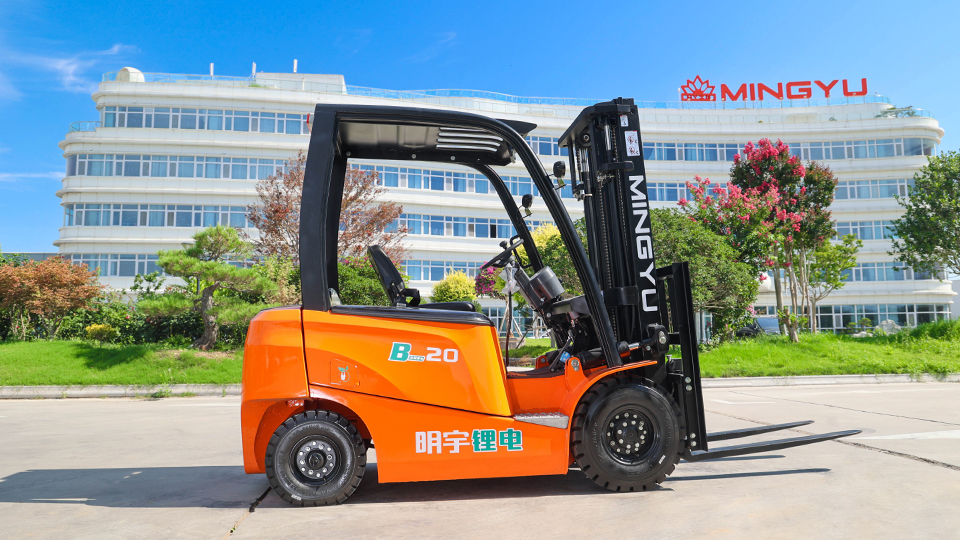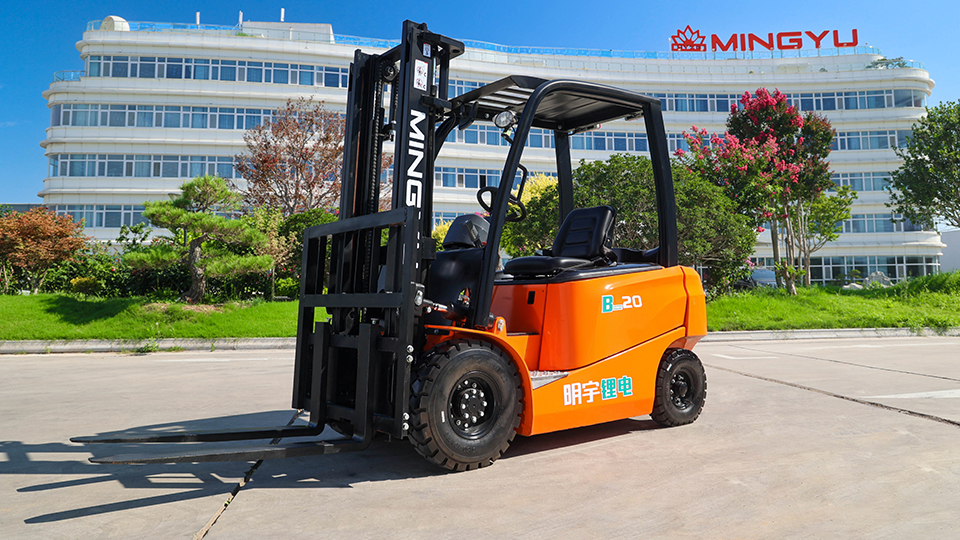
The Long Haul: Unpacking the Lifespan of Electric Forklifts
In the bustling world of material handling, the longevity of equipment is a critical factor influencing operational efficiency and return on investment. Electric forklifts, with their promise of lower emissions and running costs, have become increasingly prevalent. A fundamental question for potential and current users, however, remains: How many hours do electric forklifts last?
Unlike internal combustion (IC) engine forklifts, whose lifespan is often measured in engine hours akin to a vehicle's mileage, the longevity of an electric forklift is a more nuanced equation. It encompasses the lifespan of the entire machine, heavily influenced by the health and operational life of its primary power source: the battery. This article delves into the factors that determine the lifespan of an electric forklift, exploring both the overall machine durability and the critical role of the battery.
The Overall Lifespan: Beyond the Battery
While the battery is a key determinant, the overall lifespan of an electric forklift, measured in operational hours, is influenced by a multitude of factors, mirroring those affecting any piece of industrial equipment:
Build Quality and Brand Reputation: Just like automobiles, forklifts from reputable manufacturers with a history of robust engineering and quality components tend to last longer. Higher-quality brands often utilize more durable materials and stricter manufacturing processes, leading to a longer operational life for the chassis, mast, hydraulics, and other mechanical components.

Usage Intensity and Application: A forklift operating in a light-duty, single-shift environment in a clean warehouse will naturally accumulate hours at a slower rate and experience less wear and tear compared to a forklift working multiple shifts in a harsh outdoor environment, handling heavy loads and navigating rough terrain. The intensity of use directly correlates with the rate at which the forklift's components experience stress and fatigue.
Maintenance Practices: Regular and diligent maintenance is paramount for maximizing the lifespan of any forklift, electric or otherwise. This includes adhering to the manufacturer's recommended maintenance schedule, conducting daily pre-shift inspections, ensuring proper lubrication, checking hydraulic fluid levels, inspecting tires and forks, and promptly addressing any signs of wear or malfunction. Neglecting maintenance can lead to accelerated wear, component failures, and a significantly shortened lifespan.
Operating Environment: The environment in which the forklift operates plays a crucial role in its longevity. Exposure to extreme temperatures (both hot and cold), dust, moisture, corrosive substances, and uneven surfaces can all accelerate wear and tear on various components, including electrical connections, hydraulic seals, and the chassis itself. Forklifts operating in controlled, clean environments will generally last longer.
Operator Behavior: Improper operator behavior, such as aggressive acceleration and braking, overloading, hitting obstacles, and neglecting pre-shift checks, can put undue stress on the forklift's mechanical and electrical systems, leading to premature failures and a reduced lifespan. Proper operator training and adherence to safe operating procedures are essential for maximizing equipment longevity.
Considering these factors, a well-maintained electric forklift operating in a moderate-duty cycle can reasonably be expected to last between 10,000 and 20,000 operational hours, and in some cases, even more, particularly for high-quality brands and meticulously maintained units. This translates to roughly 5 to 10 years of service in a typical single-shift operation (2,000 hours per year).
The Heart of the Matter: Battery Lifespan
For electric forklifts, the battery is the linchpin of their operation and a significant cost component. Its lifespan directly impacts the overall usability and economic viability of the forklift. Electric forklift batteries, typically lead-acid or increasingly lithium-ion, have a finite number of charge cycles they can endure before their capacity significantly degrades.
Lead-Acid Batteries:
Cycle Life: A standard lead-acid forklift battery is typically rated for around 1,500 charge cycles.
Lifespan in Years: In a single-shift operation where the battery is charged once per day, this translates to an average lifespan of approximately 5 years, assuming proper maintenance.

Factors Affecting Lifespan:
Proper Charging: Avoiding partial charges and ensuring full charge cycles are crucial. Opportunity charging (frequent short charges) can negatively impact lifespan.
Maintenance: Regular watering (maintaining electrolyte levels with distilled water), equalization (balancing cell voltages), and keeping terminals clean and corrosion-free are essential for maximizing lifespan.
Depth of Discharge (DoD): Deeply discharging the battery below 20-30% of its capacity can significantly shorten its lifespan.
Operating Temperature: Extreme temperatures can negatively impact battery performance and longevity.
Charging Practices: Overcharging or using incorrect chargers can damage the battery.
Lithium-Ion Batteries:
Cycle Life: Lithium-ion batteries offer a significantly longer cycle life compared to lead-acid, typically ranging from 2,000 to 3,000 cycles or even more.
Lifespan in Years: Due to their higher cycle life and often better tolerance for partial charges, lithium-ion batteries can last significantly longer, potentially ranging from 5 to 10 years or more, depending on usage and maintenance.
Factors Affecting Lifespan:
Charging Practices: While more tolerant of partial charges than lead-acid, adhering to recommended charging practices is still important. Avoid extreme overcharging.
Operating Temperature: Similar to lead-acid, extreme temperatures can affect performance and lifespan. However, lithium-ion batteries often have better thermal management systems.
Depth of Discharge (DoD): While generally more tolerant, consistently deep discharging can still impact lifespan over time.
Battery Management System (BMS): The integrated BMS plays a crucial role in optimizing charging, discharging, and temperature, ultimately influencing the battery's lifespan.
It's important to note that the "lifespan" of a battery doesn't necessarily mean complete failure. It often refers to the point where the battery's capacity has diminished to a level where it no longer adequately supports the operational demands of a full shift. At this point, the battery will need to be replaced to maintain productivity.
The Interplay: Machine Hours vs. Battery Cycles
While the overall forklift lifespan is measured in operational hours, the battery's life is measured in charge cycles and calendar years. These two metrics are interconnected. A forklift used for more hours per day will naturally accumulate charge cycles faster. Conversely, a forklift used infrequently might have a battery reach its calendar-based end-of-life (due to internal degradation over time) before it reaches its maximum number of charge cycles.
Therefore, understanding the anticipated usage patterns is crucial for estimating both the overall forklift lifespan and the expected battery replacement timeline.
Extending the Life: Best Practices for Electric Forklifts
Maximizing the lifespan of an electric forklift, including its battery, requires a proactive and consistent approach:
Implement a Rigorous Maintenance Schedule: Adhere strictly to the manufacturer's recommended maintenance intervals for all components, including the battery.
Ensure Proper Battery Charging: Train operators on correct charging procedures, avoiding partial charges for lead-acid batteries and utilizing smart chargers that prevent overcharging. For lithium-ion, follow manufacturer guidelines regarding charging frequency and depth of discharge.
Practice Proper Battery Maintenance: For lead-acid batteries, regularly check and maintain electrolyte levels with distilled water and perform equalization charges as recommended. Keep battery terminals clean and free of corrosion. For lithium-ion, follow manufacturer guidelines for any recommended maintenance.
Optimize Operating Environment: Minimize exposure to extreme temperatures, dust, moisture, and corrosive substances.
Train Operators on Proper Usage: Emphasize smooth operation, avoiding overloading, and adhering to safe operating procedures.
Conduct Regular Inspections: Implement daily pre-shift and periodic inspections to identify and address any potential issues early.
Utilize Battery Management Systems (BMS): For lithium-ion batteries, ensure the BMS is functioning correctly to optimize battery performance and lifespan.
Consider Battery Monitoring Systems: Implementing systems that track battery usage, charge cycles, and temperature can provide valuable insights into battery health and help optimize charging practices.
Conclusion: A Long-Term Investment
The lifespan of an electric forklift is a significant consideration for businesses. While the overall machine can last for a substantial number of operational hours, often comparable to or even exceeding that of IC forklifts due to fewer moving parts, the battery's lifespan is a critical factor influencing the total cost of ownership.
By understanding the factors that affect both the machine and battery longevity, implementing rigorous maintenance practices, ensuring proper battery care and charging procedures, and optimizing the operating environment, businesses can maximize the lifespan of their electric forklift fleet. This translates to a greater return on investment, reduced downtime, and a more sustainable and efficient material handling operation in the long run. The question isn't just "How many hours do electric forklifts last?" but rather, "How can we best manage and maintain our electric forklifts to ensure they last as long as possible?" The answer lies in a commitment to proactive care and informed operational practices.
Name: selena
Mobile:+86-13176910558
Tel:+86-0535-2090977
Whatsapp:8613181602336
Email:vip@mingyuforklift.com
Add:Xiaqiu Town, Laizhou, Yantai City, Shandong Province, China